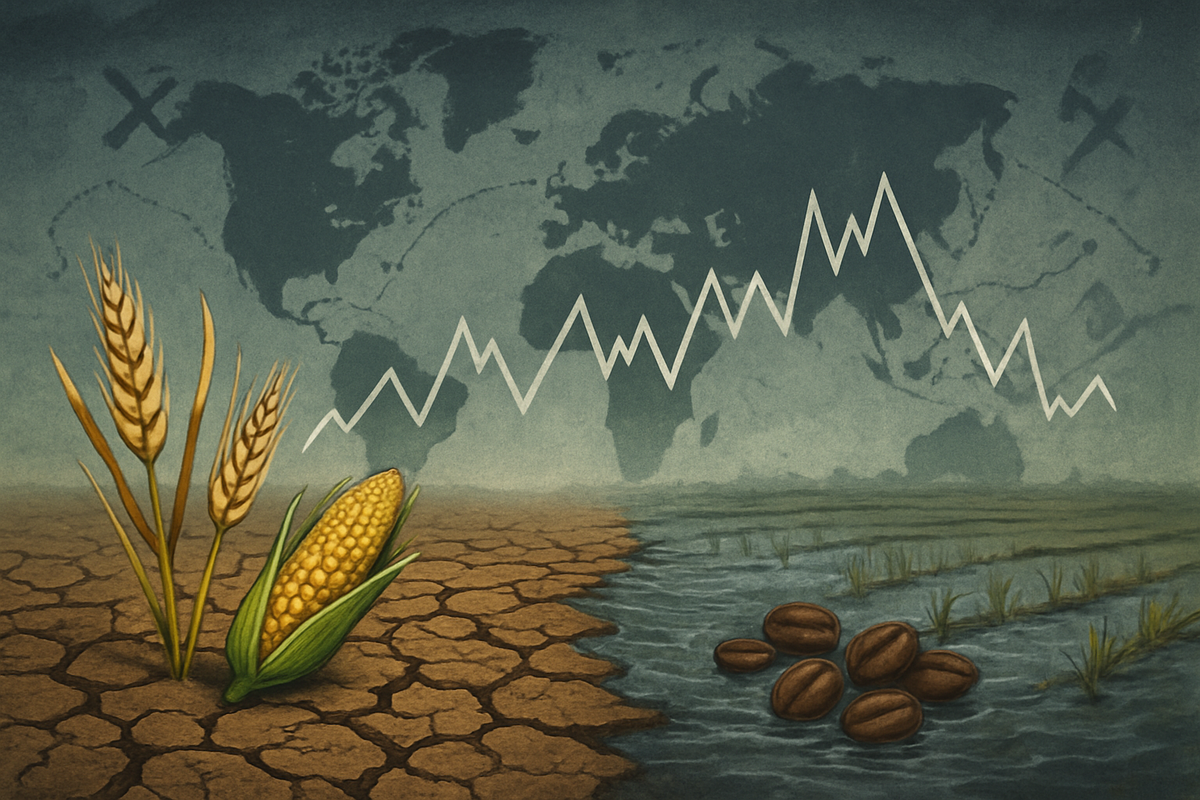SLC Agricola: Cotton grower linked to land invasions – TBIJ

Report on Corporate Responsibility and Sustainable Development Goals in the Agricultural Supply Chain
Corporate Accountability and SDG 12: Responsible Consumption and Production
Recent inquiries into the agricultural supply chain have prompted responses from major apparel brands regarding their sourcing practices and commitment to the Sustainable Development Goals (SDGs).
- Adidas: A spokesperson confirmed that since 2018, the company has exclusively used third-party certified cotton. This practice aims to ensure production methods meet industry standards, directly supporting the targets of SDG 12 (Responsible Consumption and Production). In a demonstration of SDG 17 (Partnerships for the Goals), Adidas has engaged its primary sourcing partner, the Better Cotton Initiative, to investigate the situation further.
- Nike: The company reiterated its commitment to ethical sourcing practices. This aligns with goals for sustainable production and contributes to SDG 8 (Decent Work and Economic Growth) by aiming to improve conditions within communities involved in its supply chain.
Investment Practices and ESG Alignment with Sustainable Development Goals
The investigation centers on SLC Agrícola, a major Brazilian producer of cotton, soy, and corn. The company’s financial structure and investor profile raise questions regarding the application of Environmental, Social, and Governance (ESG) principles, which are foundational to achieving the SDGs.
- Company Profile: SLC Agrícola is a publicly traded and highly profitable enterprise, having distributed $45 million in dividends to shareholders in the current year.
- Key Investors: Major asset managers, including Blackrock and State Street, are shareholders. Vanguard is a principal investor, holding over $11 million in SLC shares at the end of the last fiscal year.
- ESG Investment Scrutiny: A portion of Vanguard’s investment is channeled through its ESG-branded funds. These financial instruments are designed to promote sustainable development by screening investments against environmental, social, and governance criteria, in line with UN business principles. The inclusion of an agricultural firm in such funds necessitates rigorous due diligence to ensure compliance with:
- SDG 12 (Responsible Consumption and Production): Ensuring sustainable agricultural practices.
- SDG 15 (Life on Land): Assessing the environmental impact of large-scale cash crop cultivation.
- SDG 8 (Decent Work and Economic Growth): Verifying ethical labor and social practices.
Analysis of Sustainable Development Goals in the Article
1. Relevant Sustainable Development Goals (SDGs)
-
SDG 12: Responsible Consumption and Production
- The article directly addresses this goal by discussing corporate practices related to sustainable sourcing. It mentions Adidas using “third-party certified cotton” and partnering with the “Better Cotton Initiative, a sustainable sourcing programme.” Nike’s commitment to “ethical sourcing practices” also aligns with this SDG. The discussion of ESG (environmental, social and governance) funds investing in agricultural businesses like SLC Agrícola is central to promoting sustainable production and consumption patterns through financial mechanisms.
-
SDG 8: Decent Work and Economic Growth
- This goal is connected through the emphasis on “ethical sourcing” and the “social” component of ESG investments. While not explicitly detailed, these terms imply a commitment to fair labor practices and protecting workers’ rights within the supply chain of companies like SLC Agrícola, which produces cotton for major brands. The investigation itself suggests scrutiny of the social conditions in the production process.
-
SDG 17: Partnerships for the Goals
- The article highlights various partnerships aimed at achieving sustainability. The collaboration between Adidas and the Better Cotton Initiative is a prime example of a multi-stakeholder partnership. Furthermore, the relationship between corporations (SLC Agrícola), financial institutions (Vanguard, Blackrock), and standard-setting bodies represents a complex partnership model intended to channel financial resources towards supposedly sustainable enterprises.
2. Specific SDG Targets
-
Target 12.6: Encourage companies, especially large and transnational companies, to adopt sustainable practices and to integrate sustainability information into their reporting cycle.
- This target is evident in the actions of Adidas and Nike, which publicly state their commitment to sustainable and ethical sourcing. The existence of ESG funds, which are “meant to be independently screened for social, environmental and governance criteria,” directly relates to this target by creating a financial incentive for companies like SLC Agrícola to adopt and report on sustainable practices.
-
Target 8.8: Protect labour rights and promote safe and secure working environments for all workers.
- Nike’s statement about being “committed to ethical sourcing practices” and the “social” criteria mentioned in the context of ESG funds directly point to this target. These commitments imply that the companies and investors are, at least publicly, concerned with the labor conditions involved in producing the raw materials they use or finance.
-
Target 17.17: Encourage and promote effective public, public-private and civil society partnerships, building on the experience and resourcing strategies of partnerships.
- The article describes a public-private and civil society partnership ecosystem. Adidas (a private company) partners with the Better Cotton Initiative (a multi-stakeholder governance group) to achieve its sourcing goals. This interaction between corporations, industry initiatives, and investors like Vanguard demonstrates the type of partnership this target aims to promote.
3. Mentioned or Implied Indicators
-
Indicator for Target 12.6: Number of companies publishing sustainability reports.
- While the article doesn’t give a number, it strongly implies the existence of such reporting. For an ESG fund to screen a company on “social, environmental and governance criteria,” it would need access to sustainability data, which is typically provided in corporate sustainability reports. The statements from Adidas and Nike also function as a form of public sustainability reporting.
-
Indicator for Target 12.8 (Ensure people have relevant information for sustainable development): Use of sustainability standards and labels.
- The article explicitly mentions “third-party certified cotton” and the “Better Cotton Initiative.” These certifications and standards serve as indicators that provide information to businesses and, ultimately, consumers about the sustainability of products, allowing them to make more informed choices.
-
Indicator for Target 17.16 (Mobilize financial resources): Volume of private investment directed towards sustainable development.
- The article provides a specific data point that can be used as an indicator: Vanguard’s investment of “more than $11m in SLC shareholdings” through its ESG funds. This figure represents a measurable amount of financial resources being channeled towards an enterprise that is, at least on paper, aligned with sustainability goals.
Summary Table: SDGs, Targets, and Indicators
| SDGs | Targets | Indicators |
|---|---|---|
| SDG 12: Responsible Consumption and Production | Target 12.6: Encourage companies to adopt sustainable practices and integrate sustainability information into their reporting cycle. | Implied existence of corporate sustainability reports used for ESG screening and public corporate statements on ethical sourcing. |
| SDG 8: Decent Work and Economic Growth | Target 8.8: Protect labour rights and promote safe and secure working environments for all workers. | The “social” criteria used for screening ESG funds and corporate commitments to “ethical sourcing practices.” |
| SDG 17: Partnerships for the Goals | Target 17.17: Encourage and promote effective public, public-private and civil society partnerships. | The described partnership between Adidas and the Better Cotton Initiative; the investment relationship between ESG funds (Vanguard) and agricultural companies (SLC). |
Source: thebureauinvestigates.com
What is Your Reaction?
 Like
0
Like
0
 Dislike
0
Dislike
0
 Love
0
Love
0
 Funny
0
Funny
0
 Angry
0
Angry
0
 Sad
0
Sad
0
 Wow
0
Wow
0
















































:focal(1500,1000)/https://media.globalcitizen.org/a6/9a/a69a4720-d8a1-4715-b596-18738d03c05c/rotary_polio_hero_image.jpg?#)







/countries/sri-lanka/photo-credit---dmc-sri-lanka.tmb-1200v.jpg?sfvrsn=dc298bcc_1#)



















